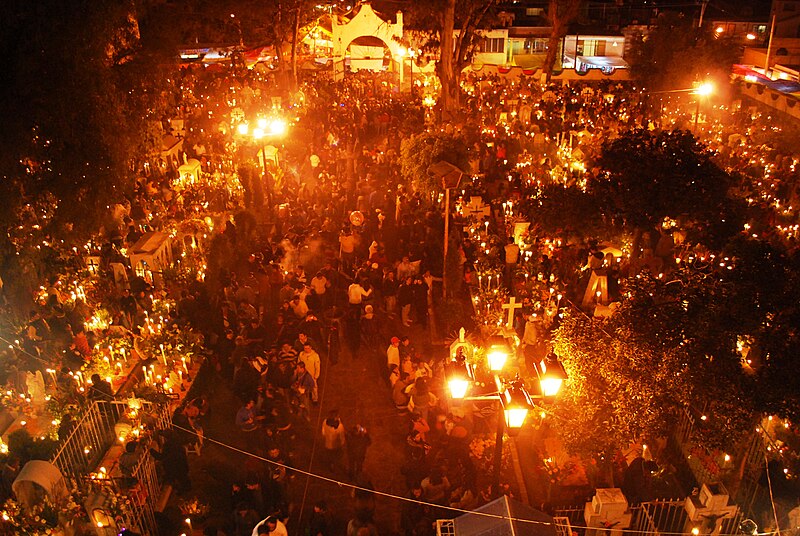Día de Muertos (vs Halloween)
Día de Muertos is a mexican observance. It is known colloquially as the Day of the Dead, though it isn’t related to Christianity and is also adopted by many other cultures worldwide. The term was launched to the world by Jose Guadalupe Posada, who designed the image of Catrina, a female skeleton in an indigenous dress.
Many people (some Mexicans and Foreigners) confuse these celebrations because, in some way, they are similar but different.
What we celebrate in Día de Muertos?
The purpose of this holiday is to remember friends and family that have died in the last years with graveside visits or celebrations in their honor known as “ofrendas” which are shared among friends and families.

In this holiday, we celebrate the dear ones who have died and those who are still living, and remind us one day, we will be there with our loved ones.
This celebration is about death and life.
When we celebrate?
Día de Muertos is on November 2nd, while Halloween falls on October 31st.

How we celebrate?
In Mexico, we open the doors and windows of our homes to honor and receive the souls who come in search of their families. We offer them a warm drink, candies and other things to eat, cigarettes or alcohol (if our deceased like it).
The celebration varies somewhat throughout Mexico, depending on the region. For example, in Yucatán, we prepare a “big tamal” called “Pib” and put a water container because according to the tradition, the souls need water after walking from the underworld to the world of the living.

In Veracruz, they perform a dance called “viejada,” dancers wear masks to represent the spirits that visit us. In Tlaxcala, a popular tradition is to serve hot chocolate and bread. This bread is called “Pan de Muertos” (the bread of the dead). This bread has been an essential part of the offerings of the dead in Tlaxcala since pre-Hispanic times; this tradition pass to the entire country (“Pan de Muertos” is so delicious)
In Mexico City, specifically in the pantheon of Mixquic, they celebrate a festival known as “Alumbrada.” It takes place at night in a kind of Carnaval along the streets. They play music and light up with thousands of lights activated by a device that makes noise when you step on it.
If you are interested in more traditional mexican food you can read this article.
Read More

This Mexican tradition is so beautiful and full of meaning. I hope this article has enlightened any preconceptions you had about these celebrations and that you will partake in them in the future.
Thank you so much for reading. If you have any doubt about Día de Muertos, please send me a message or write your question or say “Hi”. Don’t hesitate in keep in touch.

